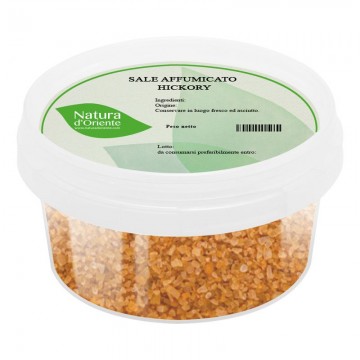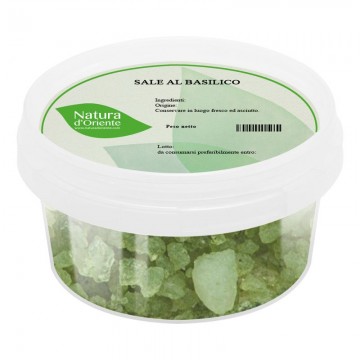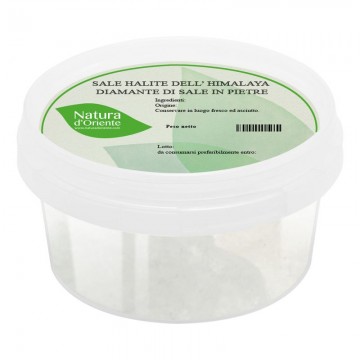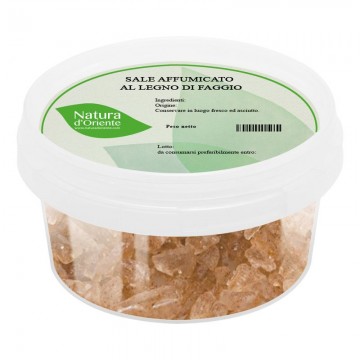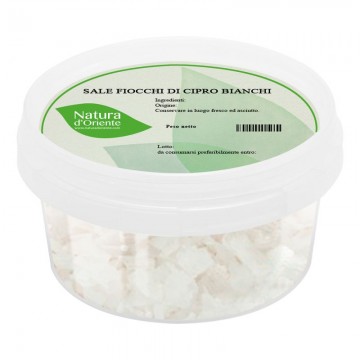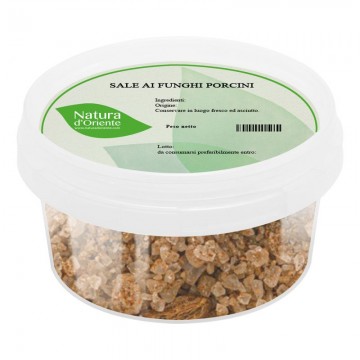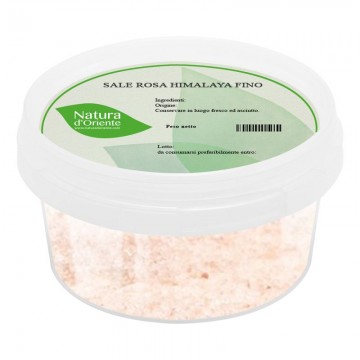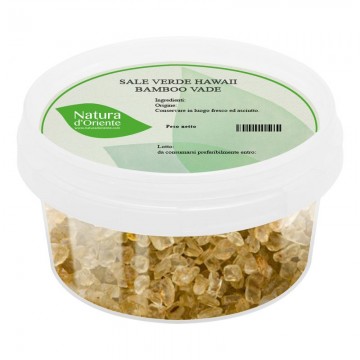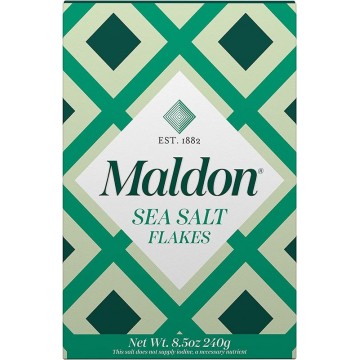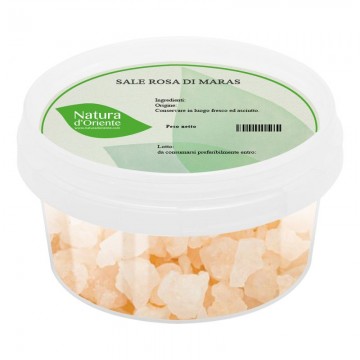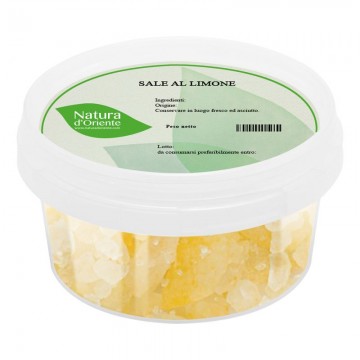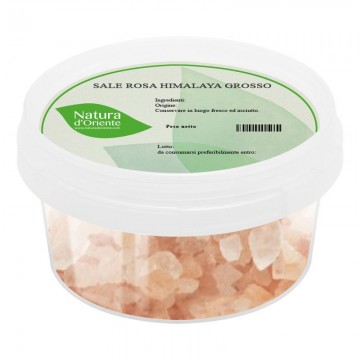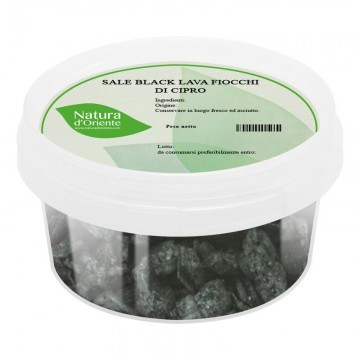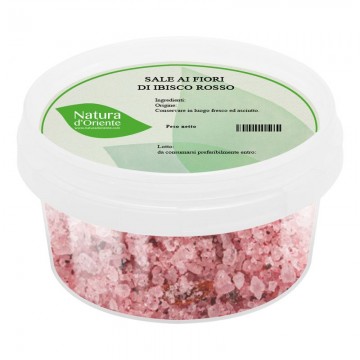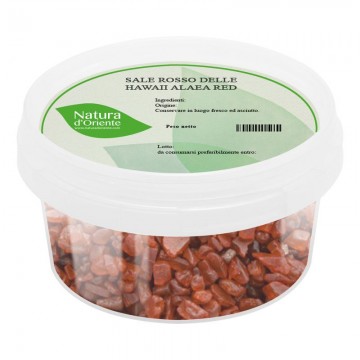This salt is obtained from the dried and ground sepals of the hibiscus plant, mixed with rock salt from the Himalayan salt mines. An exquisite and delicate salt is obtained but with sour and slightly fruity - floral notes. Splendid for its intense burgundy color that can be used to flavor food and as a garnish.
Pink Himalayan salt with Hibiscus flowers: characteristics and benefits
This version of pink salt sees the addition of hibiscus flowers for aesthetic and flavor reasons. The pink salt that veers towards the burgundy shades of the hibiscus becomes unique for the colored finishes of dishes and drinks.
In addition, hibiscus gives the salt a light acidic note, ideal in combination with fish dishes or in salads.
Its nuance between salty and acid, is perfected in floral and fruity flavor details, with a captivating exotic mix. In addition, this pink hibiscus salt exudes a pleasant fragrance. From a nutritional point of view, the fine Himalayan pink salt combines with hibiscus flowers to make up all its mineral intake. Being a rock salt carved into the rock, deriving from the ancient Himalayan sea, it is rich in many minerals and low in sodium – unlike sea salt. Hibiscus is also known for its antioxidant properties, which enhance the properties of the salt. In regards to its attractive deep pink color, hibiscus flowers are combined with the naturally pink color of Himalayan salt. This phenomenon is due to the iron ions present in the rock and to traces of iron oxide impurities.
Origins and History of mining
Himalayan pink salt comes from underground salt deposits in the Khewra region of Pakistan. Salt crystals are fossils, which are over 200 million years old, and have formed over thousands of years within the rocks of the Himalayan range. These salt deposits are the oldest and largest in the world. According to legend, Himalayan salt was discovered by Alexander the Great in the 4th century BC. in reality, the exploitation of this mountainous region for the extraction of salt is documented from the XIII century, in the medieval period.
The parts of the hibiscus used can be the petals and the calyxes, which look similar to a funnel; these are composed of the sepals, i.e. the leaves similar to the petals, of an intense burgundy color. Hibiscus is a plant famous for its beautiful colorful flowers, and comes from tropical and subtropical regions of Asia, Africa and Australia. In Europe, it grows in the temperate areas of the Mediterranean, particularly in Southern Italy.
Hibiscus flowers have symbolic meaning in many cultures, but most of all they are used to prepare a tart herbal tea, which can be served hot or cold, which is very popular in Africa. Himalayan salt is infused with hibiscus, using artisanal techniques, using the sepals to create this delicious seasoning blend.
Nutritional values of pink Himalayan salt with hibiscus flowers
This rock salt contains mostly sodium chloride, but is also rich in trace elements and minerals such as potassium, magnesium, calcium, zinc. It is low in iodine, unlike sea salt.
How to use fine Himalayan pink salt with hibiscus flowers in the kitchen This crystalline salt, finely ground, displays a fruity and slightly acidic aroma due to hibiscus flowers. Such a special salt can be used both for the aesthetic garnishes of dishes and to flavor different dishes with a sour note. It is an excellent addition to fish and meat dishes, in soups, marinades and for creating special sauces.
You can use this hibiscus salt to give dishes even a light floral tone, particularly suitable in seafood, fish fillets, for en papillote sea bream, fish dishes accompanied by vegetables.
It can be used to dress salads and vegetables that need an acidic as well as salty nuance. You can prepare a salad dressing by mixing balsamic vinegar and a few crystals of hibiscus salt, adding a drizzle of olive oil.
It is a complement to be studied for baked goods, and for salting desserts such as chocolate and ice cream. It can add color to drinks, a salty and tart edge to cocktails - used sparingly as a rimmer for Martinis and Margaritas./p>
Himalayan pink salt with hibiscus flowers: side effects and contraindications
Caution is advised in taking sea salt in case of hypertension, cardiovascular disorders, diseases related to the kidneys and blood vessels. The hibiscus component should be avoided if you are allergic to this plant or to plants of the Malvaceae family. Furthermore, it is advisable to moderate the quantities during pregnancy and breastfeeding.

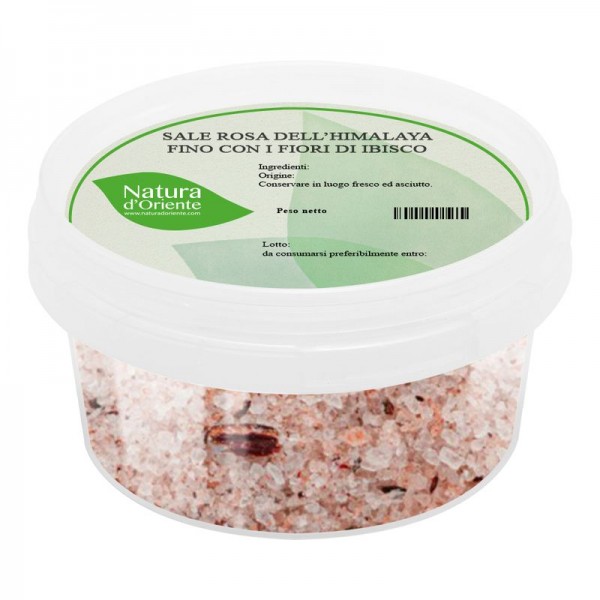





 No reward points for this product.
No reward points for this product.
